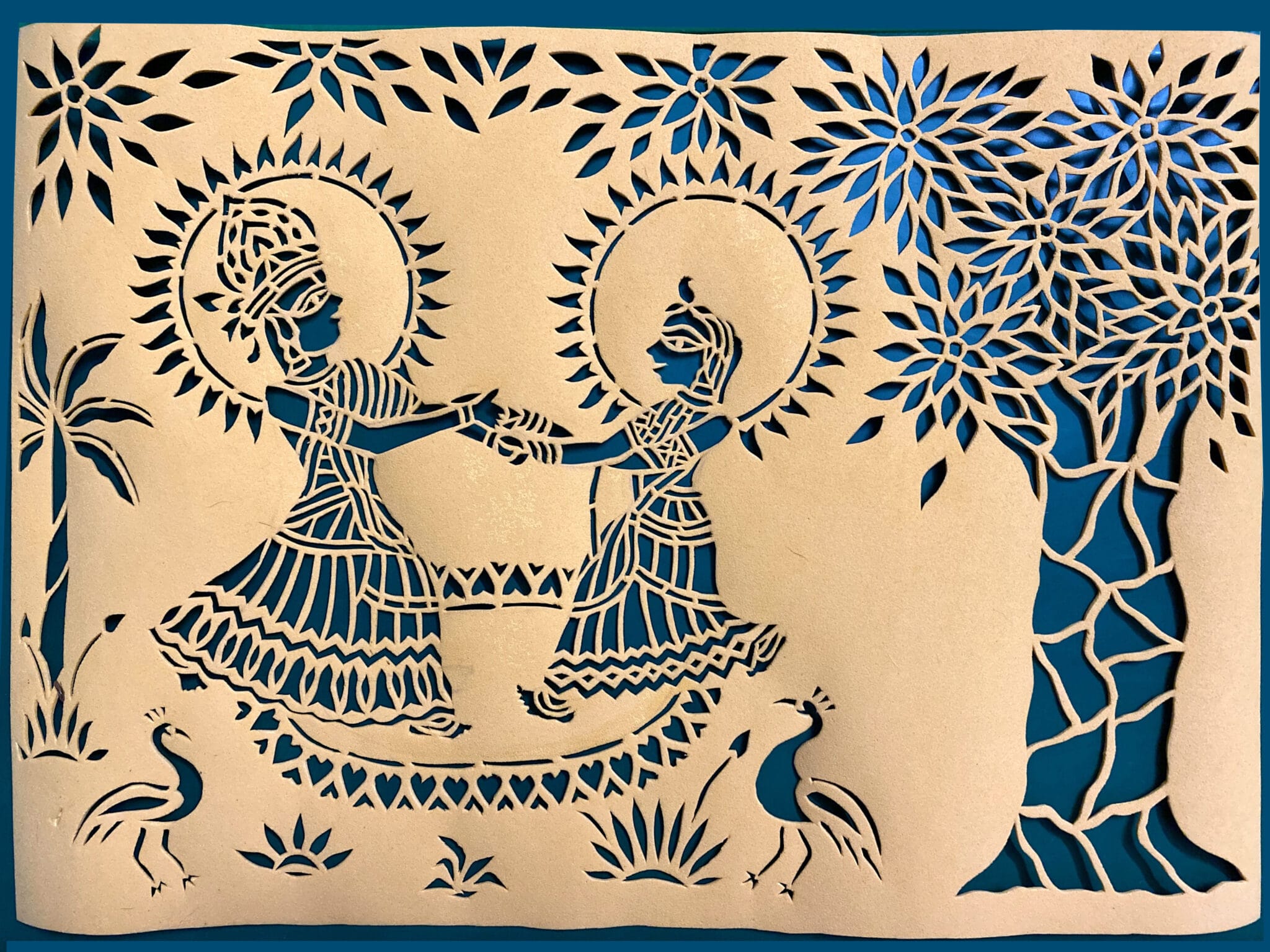Sanjhi Art
Sanjhi art is a craft form that is unique and features intricate picture motifs, and exquisite designs which are cut into paper. This art form originated in Mathura, Uttar Pradesh and in Vrindavan this art form reached its peak.
History of this art form
This art form was deeply rooted in folk culture and was popularised in the 15th and 16th centuries by the Vaishnava temples. This art form was traditionally used for making rangolis by Brahmin priests in the temples dedicated to Lord Krishna.
Significance of Sanjhi Art in mythology
In mythology, Sanjhi art has a special significance. To gain the attention of Lord Krishna, it is believed that Radha used Sanjhi Art form to paint her walls. She used metal foils, coloured stones, and flowers to paint the walls.
Growth of Sanjhi Art
During the 16th and 17th centuries, this art form grew rapidly when Sanjhi motifs were used to decorate the floors and walls of temples. For greater perspective, several contemporary themes were added to this form of art during the Mughal period.
How is Sanjhi Art made?
On paper, stencils are made using scissors which are specially designed to make Sanjhi designs. These stencils are then placed on water or flat surfaces according to the wish of the artist who will be drawing the art. Then dry colours are put over the stencils and then they are lifted carefully. Some common Sanjhi motifs are bullock carts, peacocks, cows, horses, trees, butterflies, etc.
Current usage of Sanjhi Art
Currently, Sanjhi painting is practised in only a few Indian temples. Vrindavan’s Radharamana temple is one of them. Sanjhi artworks can be found in many homes, including the metro stations in Delhi. The pictograms during the 2010 Commonwealth Games were also inspired by Sanjhi art.
Month: Current Affairs - March, 2022
Category: Art & Culture Current Affairs


